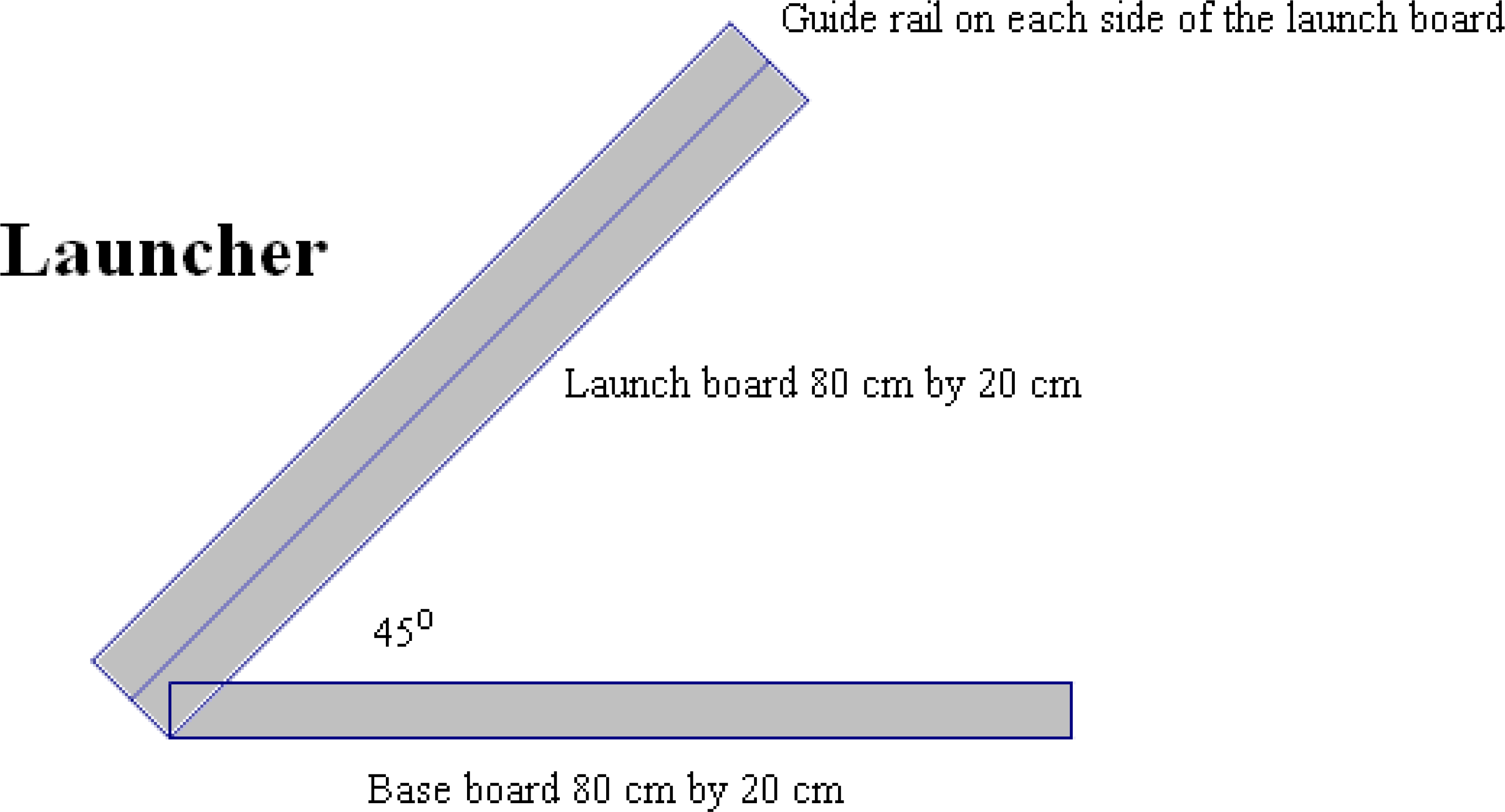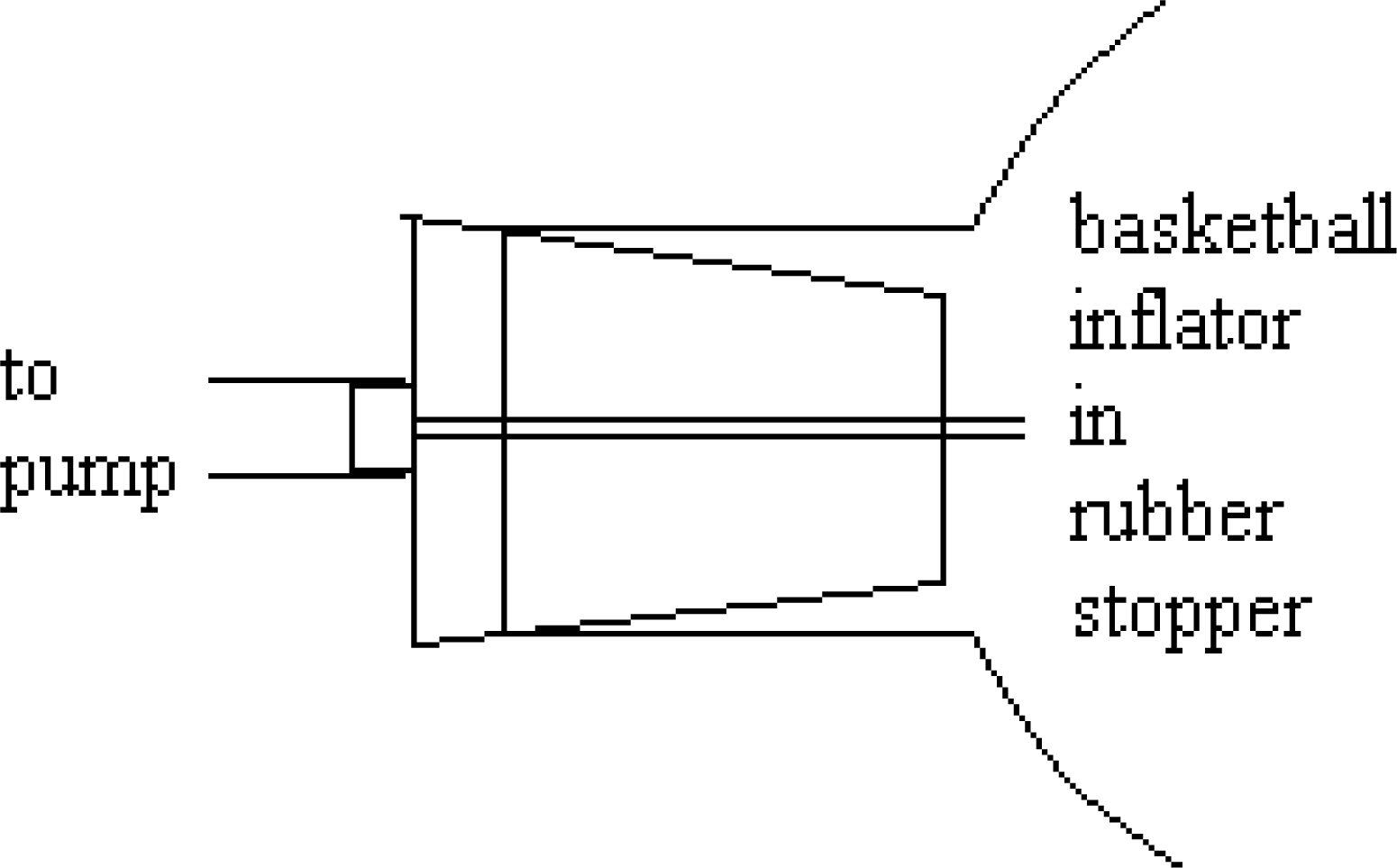Water Rockets
November 01, 2007 Filed in:
Demo CornerRolly Meisel
rollym@vaxxine.com
Having students construct and launch a water rocket is an entertaining way to investigate Newton's Third Law of motion. Students can construct the rockets at home for an in-class launching session.
Apparatus: two-litre pop bottle, range enhancers (see below), launching pad, bicycle pump with basketball-inflator “needle,” rubber stopper.
Procedure for Students:
- Find an empty two-litre pop bottle. You may glue on a “nose cone”, some “fins” and anything else that you think might help your “rocket” fly farther. However, you may not use a set of “wings” or other form of lifting airfoil, like an airplane.
- Decide how much water you want to place in the rocket. Put this much in.
- Attach the rubber stopper firmly, and place your rocket in the launcher. Pump air into the rocket until it “fires.”
- Your "score" is the distance flown horizontally, in metres.
 Figure 1: A typical launcher.
Figure 1: A typical launcher.
Notes to the teacher:
- The launcher can be as simple as two boards, angled at 45°, with guide rails on the launch board (Fig. 1).
- Ensure that the firing range is clear. A good water rocket can fly over 100 m horizontally.
- Use a basketball inflator pushed through a rubber stopper to attach the bicycle pump to the rocket (Fig. 2).
- I usually do not warn students not to stand directly behind the rocket while pumping. A little water won't hurt them, and will reinforce the workings of Newton’s Third Law.
 Figure 2: Connection between the pump and the rocket.
Figure 2: Connection between the pump and the rocket.
Possible Follow-up or Report Questions:
- Explain how the rocket works in terms of Newton’s Third Law.
- Why doesn’t the rocket work well if there isn’t much water in it?
- Why doesn’t the rocket work well if there isn’t much air in it?
- Which mixture seems to work the best?
- A real rocket for use in space must carry both fuel and oxygen. Why is this?
Other Notes:
- Just after launch, a “cloud” will often form inside the bottle, and persist for several seconds. Why this cloud forms makes for an interesting discussion or research question.
- A more sophisticated launcher can include a way of changing the angle of the two boards, allowing an investigation of range versus angle of launch.
Column Editor: Ernie McFarland, Physics Department, University of Guelph, Guelph, Ontario, N1G 2W1 Tags: Forces, Projectile Motion



